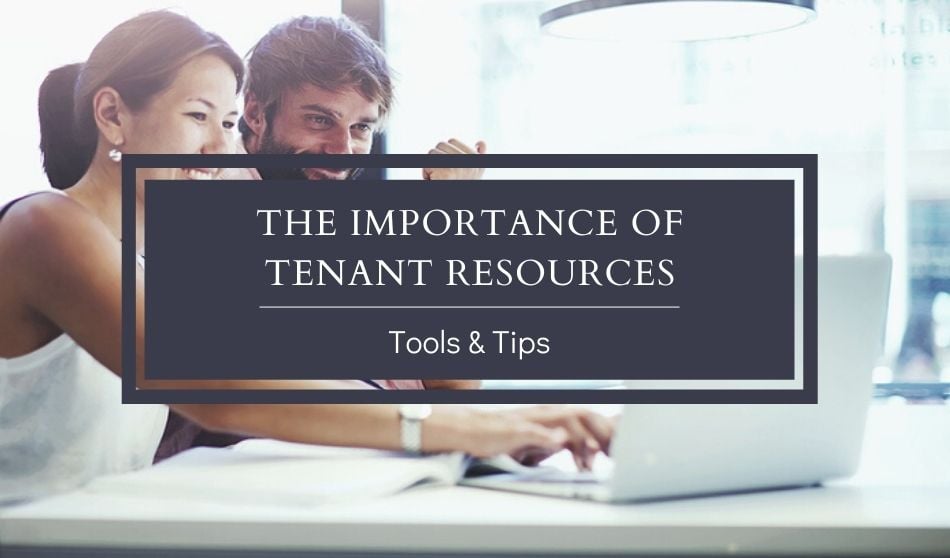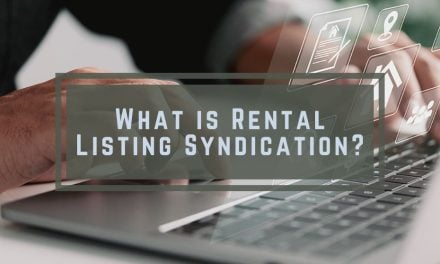
When you field the same questions day after day and scramble to get important information out to your tenants in a timely manner, it might be time to tap into new tenant resources.
Communication is everything when it comes to property management. In fact, the phrase ‘less is more’ should never be in a landlord’s vocabulary when it comes to providing resources to your tenants. From newsletters, email, text messages, flyers, infographics, tenant handbooks, and tenant portals, there are endless possibilities to keep your residents well informed.
This article will share the benefits of tenant resources and some tools, tips, and tricks for you to create additional resources quickly and easily.
Five Reasons Tenant Resources are Important
1. Keeps the tenant informed
First and foremost, your tenant needs information and needs it quickly. That information may be an update to office hours or payment procedures or upcoming event notification. A well-informed tenant should be top priority to keep the channels of communication open and alleviate any potential misunderstandings.
2. Helps the tenant in practical ways
Tenant resources can be instructional and educational to benefit the life of the resident. For example, handouts and infographics can be distributed on important weather and emergency information, financial help, and maintenance topics. These types of resources can help build your tenant-landlord relationship because it shows care and concern for their well-being.
3. Saves you time and money
Your time is finite and very valuable both financially and intrinsically. How many times a week you answer the same questions for your tenants may indicate your residents aren’t absorbing, retaining, or seeing the information provided. So if the number of repeated inquires is on the rise, a new way of communicating information may help reduces the number of repeated calls and questions.
4. Provides a ‘paper trail’ (aka documentation)
When important information is sent to a tenant having that documentation can be useful for many reasons such as insurance purposes and legal dealings like evictions. Documentation can be very handy when discussing issues with your tenants because details and data can be at your fingertips so neither party needs to rely on faulty memory.
5. Creates community
Tenant resources put all of your residents on the same page, not only about concerns, policies, and procedures but also community events and neighborhood activities. Activities, event reminders, shared recipes, and photo contests added to your tenant resources are just a few ways to build a stronger community.
Five Useful Tenant Resource Tools
You’re a busy landlord and with the right tools, getting information in the hands of your tenants doesn’t have to be a burden. Here are the top five tenant resource tools to save you time.
1. Tenant portals
Tenant portals should come standard in a good property management software program. This tenant web access is convenient for them to see their monthly statement and invoices. With a quick tenant web access login, they can make payment arrangements and submit maintenance requests and work orders. But did you know that many property management software systems also allow you to upload documents to share directly with your tenants? You could easily use the tenant file folder to upload a newsletter or flyer or even important notifications for their direct access.
2. Bulk email
In addition to tenant web access to their portal, modern rental management software can allow you to bulk email all of your tenants at once (or even all tenants within a building). This can come in handy if you have an electronic newsletter or want to remind them to check their tenant portal for an important document.
3. Text messaging
What if you need to ask a quick question or send a quick reminder? These days, more and more people are relying on and are more comfortable with text messaging vs. email or phone calls. Again, check to see if your landlord software includes SMS and text messaging. If so, ask if it can also send messages in bulk — another time saver when trying to get information out to many tenants at once.
4. Newsletters
This may seem old-school but newsletters are a tried and true form of communication that can be a lifesaver in getting information to your residents. In fact, sending out newsletters monthly or quarterly can help build trust and connection to you, your property, and their community. What isn’t old-school are the new ways of sharing newsletters such as sending an email, uploading it to their tenant portal, texting a link to the newsletter, or even creating a video newsletter to share in a private social media group.
5. Tenant handbook or tenant binder
When you want your tenants to have quick access information at their fingertips for emergencies, appliance details, neighborhood resources, rules & regulations, and contact information — a tenant binder or tenant handbook may be just the ticket.
MV commented on our blog* and shared with us her tips and take on a tenant handbook:
… “While not technically a welcome kit, it is something they get when they arrive – the “Property Book”.
Basically a binder that includes all their lease information; pet, pre-paid item(s), and security deposit receipts; general property information (utilities, trash, my contact information, etc); move-in/move-out inspection paperwork; HOA rules; maps of the local area grocery stores, schools, military base, etc; appliance manuals (frig, stove, washer, etc); and anything else particular to the property like pool information.
The tenant is to keep and maintain the binder and is responsible for returning it at move out. There is a $150 penalty if they don’t – mainly because I now have to track down all those manuals, reprint, and recreate. I’ve never had one not returned, they have always been kept in good shape, and have repeatedly been thanked for providing it,”
*Full article and her other great suggestions can be found here: Tips From Your Tenant: Make a Lasting First Impression with a Tenant Welcome Package

Remember tenants have different communication styles and preferences. Utilizing many different resources and avenues of communication like tenant portals, email, newsletters, social media, blog posts, texting, and infographics is a sure-fire way to boost engagement and retention of the information you wish to share.
Tenant Resources Tools and Tips
As a previous property manager, although time-consuming, creating resources for tenants was one of the more enjoyable tasks. To make it a little less time-consuming for you, you’ll find some great tips and tricks below.
Infographics, flyers, and handouts
An infographic is a meld of graphics and information — These bite-sized chunks of information are presented in an eye-catching manner so they are more likely to read, keep, and share it. If done well, it could win a coveted spot on the refrigerator.
There are many online tools that provide infographic templates for free to edit and make your own. One example is Venngage — and as of this writing, they offer a free plan that allows you to design and create infographics quickly and easily.
If you don’t want to make your own infographic, flyer, or tenant handout, you can find many online internet resources such as:
Environmental Protection Agency (EPA)
Center for Disease Control (CDC)
Federal Emergency Management Agency (FEMA)
Ready.gov and more
Tip: When searching through a specific website (like any of the above) or the internet in general, try searching using one of these words: ‘infographic’, ‘fact sheet’, ‘publication’, or ‘guide’.
Did you know that the Rentec Direct blog offers free infographics and guides to share with your tenants? Here are a few popular ones to help you get started:
- 5 Ways to Embrace Eco-Friendly Living From Home: Infographic
- Cicadas to Emerge in 15 State: Prepare & Protect Infographic
- 8 Ways to Make Moving Easier for Kids: Infographic
- 5 Fun Ways to Declutter with Fellow Residents: Infographic
- The Ultimate Guide: How to Rent an Apartment
Social media and blogging
Getting the word out to your tenants can come in the form of a private social media group or directly from an online blog on your website. Posts and graphics don’t have to be expensive. In fact, one great resource is Canva. Their free account should provide you with enough templates and resources to make your social media posts and blogs engaging. They even provide training videos to help with any learning curve.
Instead of recreating the wheel — you could always simply share content from others that you think would be useful for your tenants. It’s easy and free. One way to do that is to use the share options within an article to post it directly to your social media pages.
Another option is to quote and link to an article in your newsletter, email, blog, etc. For instance, the Rentec Direct blog offers many tenant-focused articles you are welcome to link to and quote such as:
- Tips for a Productive Home Office in a Small Space
- Home and Office Cleaning Tips for a Safe Environment
- Best Tips for Damage-Free Decorating Your Rental
- Stylish Decor Ideas for Renters Who Love Pantone’s Classic Blue
- 5 Tips for First-Time Renters
- 5 Apartment Organization Tips to Embrace Right Away
Note: As with any resource you find online, if you want to republish an entire article in full on your website, be sure to first ask permission and find out the criteria required for use. Typically authorized republication criteria would ask you to include the author’s name, website name and link, and may also require you to note the original publication date.
Newsletters
A newsletter can be a mix of all of the above with some added content like recipes, holiday ideas, local sales and services, office hours, and of course, events.
Adding a calendar is a great touch and can include yard sales, clean-up days, volunteer opportunities, activities, and deadlines, and much more.
Here’s a handy article with some newsletter ideas to get you started:
How to Write a Great Tenant Newsletter
If a newsletter feels daunting to create, there are companies dedicated to creating and mailing out tenant newsletters for you. The cost may include a setup fee, per item printing, postage, and editing depending on the provider. Because resident newsletter providers can be niched, consider searching for terms specific to your rental community or business such as:
HOA newsletter providers
Community newsletter service
Apartment newsletter provider
Real estate newsletter service
Tenant newsletter services
Tip: Consider creating a video newsletter or record a Facebook live video to share in your private Facebook community group. Speaking of video, linking to useful videos in your newsletter and communication can boost engagement with your content.
Become a Tenant Resource Center
An infographic handout on how to stay cool in a heatwave or summer pool safety might save someone’s life. A flyer about a community event may just be what connects a college student to find friends in a new neighborhood. Having a handbook with appliance information can save the tenant from the embarrassment of calling you for help. And those contacts and information about local businesses and services can be just what your tenant needs their first month in a new rental.
Your communication efforts impact lives – and becoming a tenant resource center creates a great tenant experience. That, in turn, may lower tenant turnover, increased profits, and free up some of your valuable time.
As a landlord or property manager, you set the tone for your tenants by building trust and community and helping them feel at home. You can choose to provide important information virtually by way of a tenant portal, text message, email, blog, or social media post — or with a tangible printed resource — or both. It’s up to you how you’d like to share information but the important thing is to do so often.





